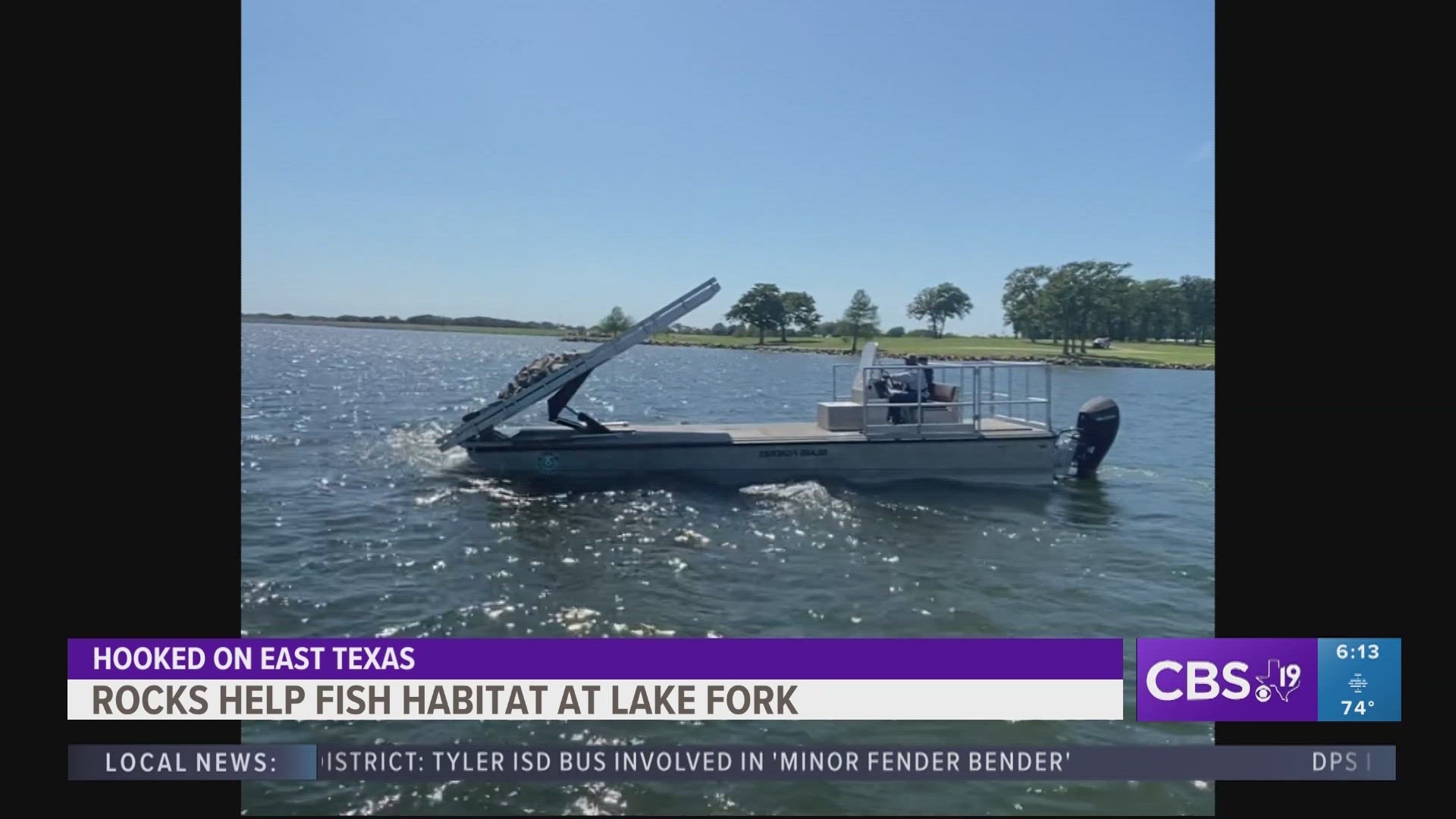WOOD COUNTY, Texas — You might call this a hard rock edition of Hooked on East Texas.
We're talking about how rocks are making the fish habitat better at Lake Fork. Sometimes what you see isn’t always what you get.
What may look like just a bunch of rocks being dumped into the water, is actually a habitat conservation project on Lake Fork. Recently, Texas Parks and Wildlife, with the help of the Sabine River Authority, unloaded a whale’s weight worth of rocks onto an underwater point in about 18'- 22' of water.
We rode along inland fisheries supervisor Jake Norman who took us to the underwater rock pile.
“We’re on this big, long underwater point here that fish naturally want to be on," Norman said,. "They utilize it a lot, especially this time of year, in the summer, and the wintertime as well. But you can see it’s just a big flat barren point.”
That’s where the rocks come in. Over time, algae grow on sunken rocks. The rocks are deep enough they don’t jeopardize boats and there’s the right amount of rock for the beginnings of a bottom-up food chain. Norman described how it works.
“It’s going to provide a different habitat and I think fish are going to really flock to it for that reason and again, this rock is going to have cavities and holes in it so small bait fish communities can just live in this area," Norman said.
The project was made possible by Texas BASS nation after the organization applied and got a grant from the American Fishing Tackle Company (AFTCO). Since 2018, AFTCO has awarded more than $95,000 in grants for conservation minded projects like this one.
And if you’re wondering how you can see the rock pile on Lake Fork, you don’t need forward-facing sonar, you can go to the Texas Parks and Wildlife website and look up the longitude and latitude lines. Put them in on your phone and it’ll take you right to where the fish are. This might be a fish habitat project, but the goal is to help anglers catch more fish.
“This is just a phenomenal place where fish traditionally want to be", said Norman. "But we’re just giving them more of a reason to stick around, kind of concentrate them in this area and ultimately that relates back to angler success, giving anglers a place to target fish and have improved catch rates more often.”
No formal studies are scheduled for the rock pile, but biologists say they will monitor the new habitat with hopes of adding to it.

